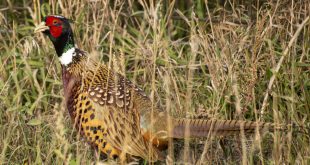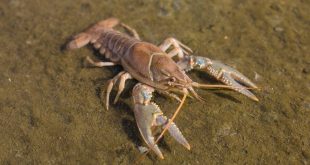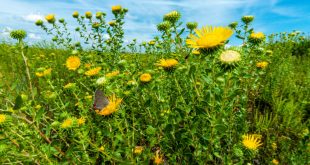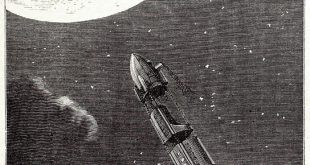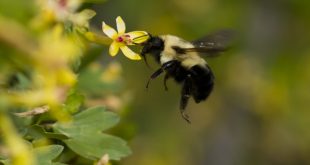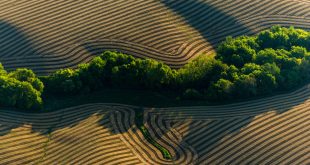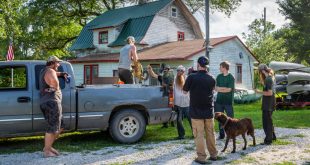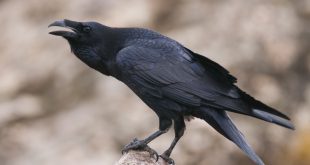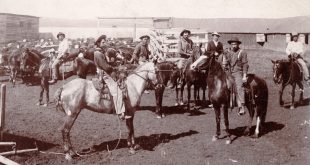By Allison Barg, University of Nebraska-Lincoln Research Graduate Assistant Read Part I: https://magazine.outdoornebraska.gov/2022/04/a-researchers-field-season-part-i/ Read Part II: https://magazine.outdoornebraska.gov/2022/05/a-researchers-field-season-part-ii/ One of the hardest and most interesting aspects of research is that answering one question generally leads to at least three new ones. For example: What is the best way to count pheasants? Answer: Males crow regularly during the breeding season, so we can listen for those calls and count how many we hear. Easy, right? But to make those counts useful, we …
Read More »Nebraska’s Crayfish
By Grace Gaard, Outdoor Educator Crayfish – also known as crawdad, crawfish and mudbug – is no fish. It’s an arthropod and more specifically, a freshwater crustacean. With their jointed legs and protective exoskeleton, crayfish are a unique part of Nebraska’s aquatic ecosystems. A crayfish’s body is comprised of three main parts: head, thorax and abdomen – similar to their distant insect relatives. Where crayfish begin to differ from insects, however, is that they have five pairs of legs, giving …
Read More »Gumweed Bonanza!
Story and photos by Chris Helzer, Nature Conservancy As a short-lived plant, gumweed lives the life of a scrappy and unfairly maligned opportunist. When grasses are heavily grazed, a streambank erodes, or repeated travel creates a trail of bare ground, curlycup gumweed jumps up and says, “Hold my beer!” It can’t fight toe-to-toe with perennial grasses, but if those grasses are temporarily sidelined, gumweed can ably fill the space until the regulars can return. As a reward for its service, …
Read More »Southwest Nebraska’s 1884 UFO
By David L. Bristow, History Nebraska The story went like this: A “blazing aerolite” crashed near Benkelman in the southwestern corner of Nebraska. Local cowboys found metal machinery scattered over the prairie, but the intense heat kept them from getting too close. Returning the next day, they found the remains of an object “about 50 or 60 feet long, cylindrical, and about 10 or 12 feet in diameter.” That was how the Lincoln-based Nebraska State Journal broke the news on …
Read More »Get Your Buzz On
By Monica Macoubrie, Wildlife Education Specialist I grew up believing that the western honey bee (Apis mellifera), also called European honey bee, was the god of all bees. Now as an adult, I see things differently. Sure, the species is crucial to the production of honey and a central money maker in agriculture, but let’s face it: The western honey bee is essentially cows with wings. And because they are a domesticated species, almost all of their genes have been …
Read More »Patterns from Above
I fell in love with flying in small planes when I was a little twerp, riding in the back seat of one my dad was piloting. My first foray into aerial photography came during an internship at Chadron State College. That assignment was a big one: Photograph the entirety of the Oregon and California trails from Missouri to the West Coast. Wow. So when I joined the staff at Nebraskaland Magazine 21 years ago, I quickly raised my hand when …
Read More »Risk Assessment in Children
Dangerous Things You Should Let Your Children Do By Jamie Bachmann, Wildlife Educator The words “risk” and “children” rarely fit comfortably in the same sentence. Well-meaning parents, myself included, do all we can to protect the most innocent from what we perceive as risk. We bandage every scrape. We make them aware of every potential danger they, assumingly, can’t possibly see. We remove every possible hazard within a two-mile radius. What happens, then, when those children inevitably go out into …
Read More »The Turtle Family
The Rutten Family of Cedar Rapids Pass on a Hunting Tradition The Ruttens of Cedar Rapids do something that no one else does: hunt snapping turtles with their bare hands. Every summer, the Rutten “boys” — geared in old tennis shoes, jeans and a T-shirt — ease down into the greasy, stagnant oxbow lake on the flood-prone family property, called “The Island.” Each man carries a pitchfork, while other family members wait on the bank ready with gunny sacks. Walking …
Read More »Raven’s Return
By Joel G. Jorgensen Before Nebraska was settled by European Americans, its vast open areas were inhabited by the common raven. Ravens are similar to American crows, but are larger with a more extensive vocal repertoire that includes husky guttural croaks. With the disappearance of the vast herds of bison in the late 1800s, the raven was soon to follow, retreating to mountainous areas of the west and forests of the far north. However, this adaptable and widespread species was …
Read More »“Utter Disregard for Peril”
Eyewitness Account of an 1870s Nebraska Roundup By David L. Bristow, History Nebraska By the mid-1870s Nebraska’s open-range cattle industry … was experiencing growing pains,” writes historian Jim Potter. In the Platte Valley and the Panhandle, people worried about the “introduction of Texas cattle to supply the Indian agencies, unregulated ‘round-ups’ that caused ownership disputes (in winter, long hair made brands hard to see), and bulls running at large year round.” In early 1875, cattlemen met in Ogallala to organize …
Read More » Nebraskaland Magazine
Nebraskaland Magazine
